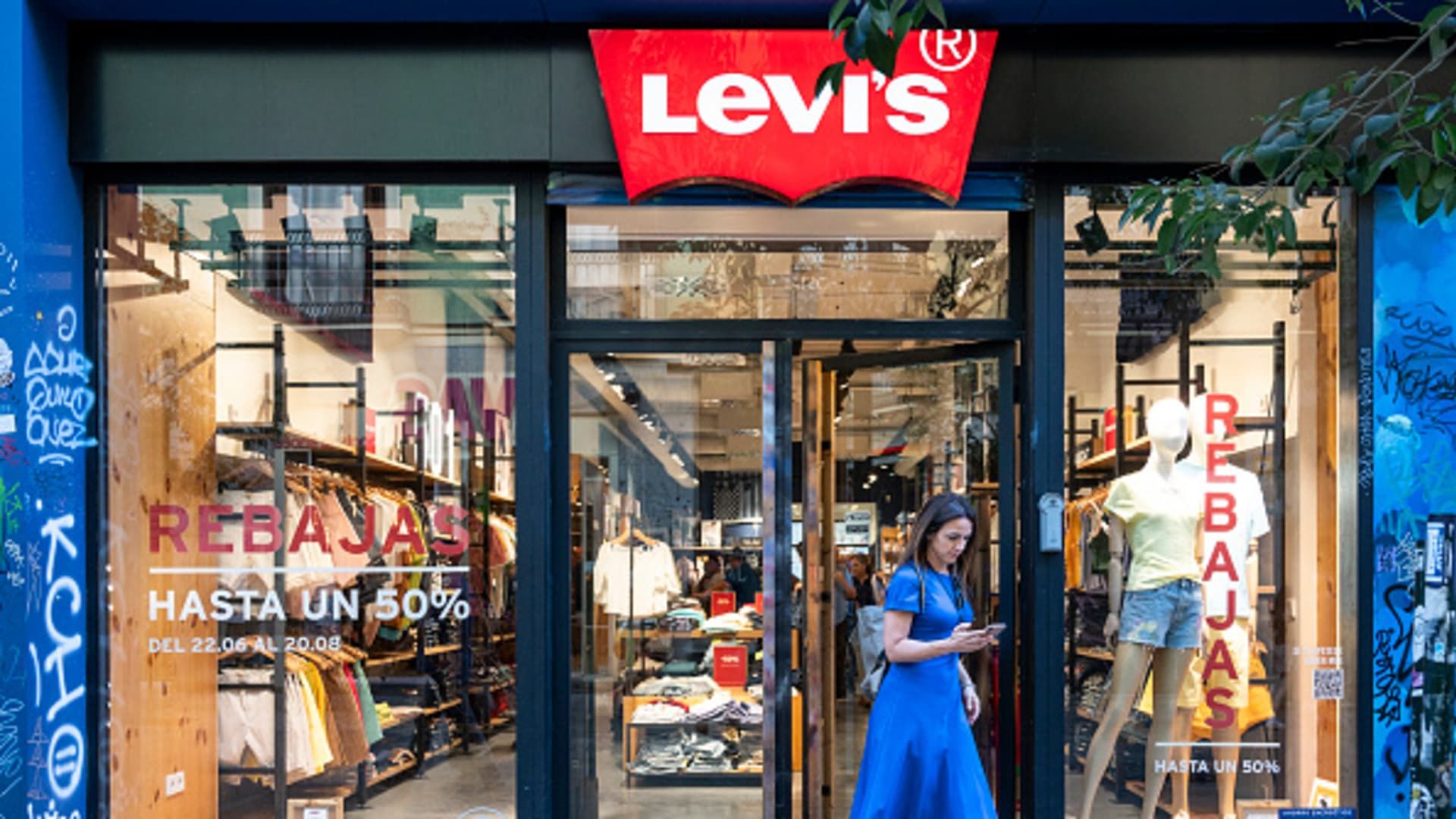Denim is having a moment with consumers, but it hasn't generated a big boost in sales in Levi Strauss.
The jeans maker on Wednesday posted fiscal second-quarter revenue that fell just short of Wall Street expectations at a time when shoppers are filling their closets with ultra-low-rise denim dresses, skirts and baggy pants.
Levi's posted better-than-expected profits as its direct-to-consumer sales and cost cutting continue to pay off. The company increased its dividend 8%, to 13 cents per share, its first increase in six quarters.
Here's how Levi's performed during the quarter compared to what Wall Street anticipated, according to a survey of analysts by LSEG:
- Earnings per share: Adjusted 16 cents vs. expected 11 cents
- Revenue: $1.44 billion vs. $1.45 billion expected
The company's reported net income for the three-month period ended May 26 was $18 million, or 4 cents per share, compared with a loss of $1.6 million, or zero cents per share, a year earlier. Excluding one-time items, Levi's posted earnings of $66 million, or 16 cents per share.
Sales rose to $1.44 billion, up 8% from $1.34 billion a year earlier. However, the increase in sales is due to a simpler comparison.
In the same period a year earlier, sales fell 9% after Levi's moved its wholesale shipments from its fiscal second quarter to its fiscal first quarter. The change reduced sales last year by about $100 million, the company previously said. Excluding the change, as well as the exit of Levi's Denizen business, sales would have increased about 1% in its most recent quarter compared to the prior-year period.
Finance chief Harmit Singh attributed the loss of sales to unfavorable currency conditions and weak sales at Docker's. During the quarter, the khaki and chinos brand posted $82.4 million in sales, up 8.6% from $75.8 million in the same period a year earlier. It's unclear how sales at Docker's were affected by the timing of Levi's wholesale orders.
While Levi's posted a strong profit advance, it only reaffirmed its full-year guidance, which was in line with estimates. The company continues to expect full-year earnings per share to be between $1.17 and $1.27, which now includes a 5-cent hit from the company's new distribution and logistics strategy.
Levi's said it is moving from a primarily owned and operated distribution and logistics network in the United States and Europe to one that relies more on third parties.
“In the short term, these changes will require parallel operation of new and old facilities through the remainder of 2024, resulting in a temporary increase in distribution costs,” the company said.
The change allows Levi's to shift responsibility for final delivery to third parties. He noted that he has new terms with his supplier that result in Levi's taking inventory closer to the shipping point rather than its final destination. Levi's distribution network was created for a company that sold primarily to wholesalers and now needs to change to one that focuses more on selling directly to consumers.
The changes are necessary because almost half of Levi's sales these days come from its own website and stores.
Direct-to-consumer sales increased 8% during the quarter, representing 47% of total sales. Online sales increased 19%.
“Our transformational pivot to operate as a DTC-first company is delivering positive results around the world, giving me great confidence that we will deliver accelerated, profitable growth for the remainder of the year and beyond,” Chief Executive Officer Michelle Gass said in a statement.
During the quarter, wholesale revenue grew 7%, but excluding the change in the timing of wholesale orders, sales in the channel decreased 4%.
By creating its own direct channels, Levi's enjoys higher profits, better data on its consumers, and less dependence on unstable wholesalers like Macy's and Kohl's, which continue to shrink and fall out of favor with consumers.
However, selling directly can also be more expensive and can present unexpected setbacks that can affect sales and reduce profits. For example, when someone buys a pair of Levi's at Macy's and wants to return them, Macy's typically covers that cost. Under a direct model, that responsibility, including cost and logistics, would fall to Levi's.
Nike has become known as a cautionary tale for retailers that have long relied on wholesalers trying to expand direct sales.
For a time, Nike's focus on direct sales boosted revenue and profits, but some critics said the change in strategy led to a slowdown in innovation and, ultimately, losses in market share.
The company recently acknowledged that it was wrong to cut so many of its wholesale partners and said it has since “corrected it.”
Read the full earnings release here.







